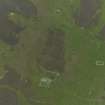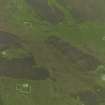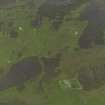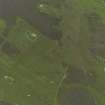Scheduled Maintenance
Please be advised that this website will undergo scheduled maintenance on the following dates: •
Tuesday 3rd December 11:00-15:00
During these times, some services may be temporarily unavailable. We apologise for any inconvenience this may cause.
Rousay, Cairn
Farmstead (Period Unassigned), Head Dyke (Post Medieval)
Site Name Rousay, Cairn
Classification Farmstead (Period Unassigned), Head Dyke (Post Medieval)
Canmore ID 182035
Site Number HY33SE 55
NGR HY 3767 3251
Datum OSGB36 - NGR
Permalink http://canmore.org.uk/site/182035
- Council Orkney Islands
- Parish Rousay And Egilsay
- Former Region Orkney Islands Area
- Former District Orkney
- Former County Orkney
HY33SE 55 3767 3251
A farmstead comprising two unroofed buildings and a head-dyke are depicted on the 1st edition of the OS 6-inch map (Orkney and Shetland (Orkney) 1882, sheet lxxxiv). One unroofed building is shown on the current edition of the OS 1:10000 map (1977).
Information from RCAHMS (SAH) 11 December 2000
Field Visit (15 May 2015)
This farmstead comprises two drystone buildings set side-by-side and up and down the slope at the E end of an irregularly-shaped area of formerly cultivated ground measuring about 4 acres (1.6ha) in extent, now bounded by a ruinous head-dyke. The NW building, which was probably a dwelling, has measured 8m from NE to SW by 4.3m transversely within a wall up to 0.7m in thickness but it has been reduced to an overall length of 6.2m overall. The entrance on the SE leads into a passageway (0.8m wide) between the two buildings. The SE range is of two phases, the SW compartment (a byre) being earlier than the NE one. Overall, it measures 6.9m by 3.4m and there are two entrances leading into the passage. A small wooden peg has been set into a niche in the byre in order to tether a cow. There are slight indications of an earlier enclosure immediately NW of the buildings.
Thompson notes (1981, 46) that Cairn was reduced to a holding of only 1 acre (0.4ha) in the 1840s and was probably amalgamated with Breek (HY33SE 53) before 1841. The buildings are depicted unroofed on the 1st edition of the OS 25-inch map (Orkney 1882, Sheet LXXXIV.12) and a contemporary account states that the name applies to ‘the ruin of a dwelling house’ (Name Book 16, 25).
Visited by RCAHMS (GFG, KN) 15 May 2015.
Measured Survey (15 May 2015)
RCAHMS surveyed Cairn farmstead with plane-table and alidade on 15 May 2015 at a scale of 1:250. The resultant plan was redrawn in vector graphics software.
Excavation (11 May 2015 - 16 July 2015)
HY 3758 3264 (Breck), HY 37384 30093 (Skaill) and HY 37289 30396 (Brough) Archaeological investigations into the Rousay clearances took place at two sites, c2.5 km apart, in the W of Rousay, 11 May – 16 July 2015. Excavation was undertaken at Breck Farmstead in Quandale in conjunction with measured and landscape survey by RCAHMS of the neighbouring farmsteads. In addition, a building recording survey was undertaken and a test pit excavated at Skaill Farm, Westness. Geophysical survey (magnetometry) was also undertaken at Skaill and nearby Brough Farm. The project was in partnership with the ongoing excavations at Swandro multi-period settlement and tombs (University of Bradford), and investigation of the multi-period landscapes of the island.
At Breck (11–22 May 2015), eight small keyhole trenches were excavated within the farm buildings and four test pits around the nearby enclosure. Breck consisted of two building ranges separated by a close (but and ben with additional room, and corn kiln, barn and byre). The earth floor in the but end had been replaced and the remains of a leather shoe was found buried in the upper floor layer. In a similar manner, the original central hearth slab in the but end had been overlain by another slab which also had a rough back wall. A ‘Z’ motif had been carved into the SW end of the lower hearth slab and may have been a good luck charm. The hearth appears to have been replaced along with the floor. Paving slabs and stone roof slabs were found in the close. The presence of window glass suggests that the stone roof had small skylights. The corn drying kiln had a flue into the barn, both had been swept clean. A dump of pottery was found in the neuk bed and byre drain. Indications are that the farm was built in the late 18th to early 19th century as an outset into the hill land beyond the hill dyke. A team from RCAHMS led by George Geddes prepared notes on 68 sites within the Quandale area, and produced measured surveys of seven farmsteads (North House HY33SE 49, Hestival HY33SE 51, Breek HY33SE 53, Cairn HY33SE 55, Knapknowes HY33SE 60).
At Skaill Farm, measured building survey was undertaken at the two ranges and corn kiln. Geophysical survey (magnetometer) was undertaken in four blocks around the farmstead and also a single block at Brough Farm. The results from Skaill indicated the presence of earlier boundaries on a different alignment to the present post-medieval boundaries, which may relate to an earlier farm.
A small test pit was excavated in the garden area adjacent to the main farmhouse to investigate potential post-medieval midden for animal bone assemblages (8–9 and 14–15 July 2015). Midden enhanced topsoil (containing pottery, animal bone, glass and a 1743 half penny) sealed a stony demolition layer (containing fish bones and a sherd of steatite) which in turn sealed a stone wall. The wall was on a slightly different alignment to the main farm building and is likely to relate to an earlier structure and the other geophysical anomalies. The steatite suggests that the earlier farm could date to the
Viking period.
Archive: Archaeology Institute, UHI
Funder: Orkney Islands Council, Orkney Archaeology Society and Archaeology Institute, UHI
Daniel Lee, Keir Strickland, Jane Downes, Ingrid Mainland and George Geddes – Archaeology Institute, UHI and HES
(Source: DES, Volume 16)
































